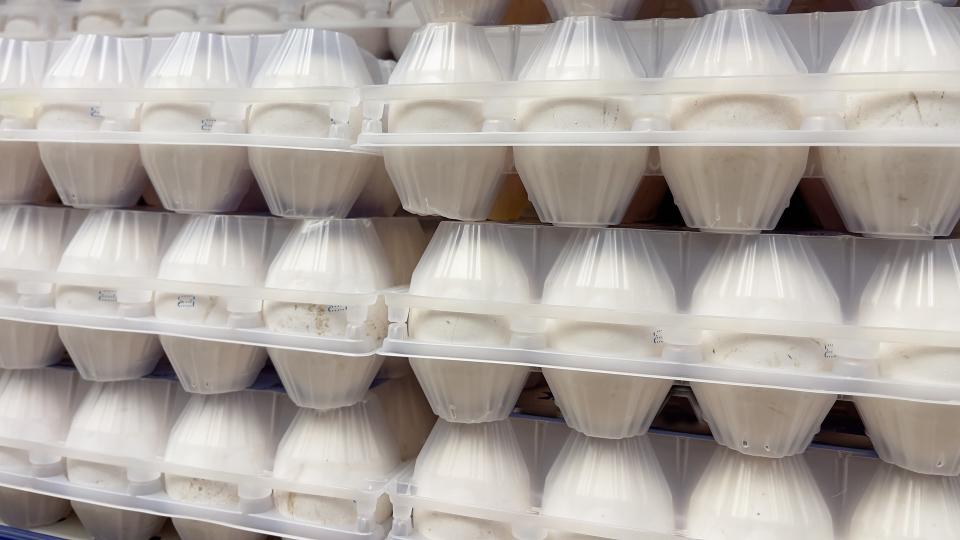Are $5 Eggs on the Horizon After Another Bird Flu Outbreak?

If you’re planning a Christmas morning brunch with quiche or frittata or deviled eggs on your Christmas Eve appetizer menu, you may want to plan ahead and allocate some more cash in your budget for eggs.
See: 7 Food Delivery Services That Will Save You Money This Holiday Season
Find: Pocket an Extra $400 a Month With This Simple Hack
The top egg producer in the U.S., Cal-Maine Foods, temporarily ceased production at its Kansas facility because of the company’s first-ever outbreak of Avian influenza, commonly referred to as bird flu. The spike in egg prices we could see before the end of the year might make you want to hit the eggnog.
The company, based in Mississippi, had dodged the virus in 2022, when more than 72 million birds in the U.S. were killed to slow the outbreak, Bloomberg News reported. At that time, eggs in the Midwest hit $5.35 per dozen. Prices have fallen 69% since then, and are currently at $2.06 (wholesale price) per dozen for regionally laid whole eggs, according to USA Today. That’s close to the three-year average, USA Today reported.
The recent outbreak affected roughly 684,000 laying hens, nearly 1.6% of the total flock, according to a Reuters release. However, there is some good news; Cal-Maine said the outbreak isn’t an immediate public health concern or a threat to the food supply, according to the U.S. Department of Agriculture.
However, USDA reports also showed an increase in cases in the last 30 days, with 92 flocks confirmed having HPAI (Highly Pathogenic influenza A infections) across 22 states. Currently, 1,012 flocks are affected across 47 states.
Kevin Bergquist, Wells Fargo Agri-Food Institute Sector Manager, told USA Today in a written statement that the virus is spreading at a similar pace to last year’s outbreak, which was very serious.
Berquist also discussed the potential ramifications of the virus continuing to spread. “Seemingly every day there is another announced infection site, which not only physically reduces the actual number of egg layers, but also casts a negative psychology over the entire egg market,” he wrote to USA Today. “The reaction to supply stress is price increase.”
Seasonal fluctuations, of course, account for some of the price increase. Some experts believe U.S. producers have enough inventory to deal with the losses caused by Avian flu.
“Prices are going to go up, of course, because of seasonal demand, and this will start restricting inventory some. But we’ve got a lot of eggs on hand right now,” Dennis Brothers, associate extension professor at Auburn University’s agricultural economics and rural sociology department, told USA Today.
More From GOBankingRates
Grant Cardone Says Passive Income Is the Key To Building Wealth: Here's His No. 1 Way To Get It
Don't Make These Common Mistakes If You Want to Retire Wealthy
This article originally appeared on GOBankingRates.com: Are $5 Eggs on the Horizon After Another Bird Flu Outbreak?

 Yahoo Finance
Yahoo Finance 